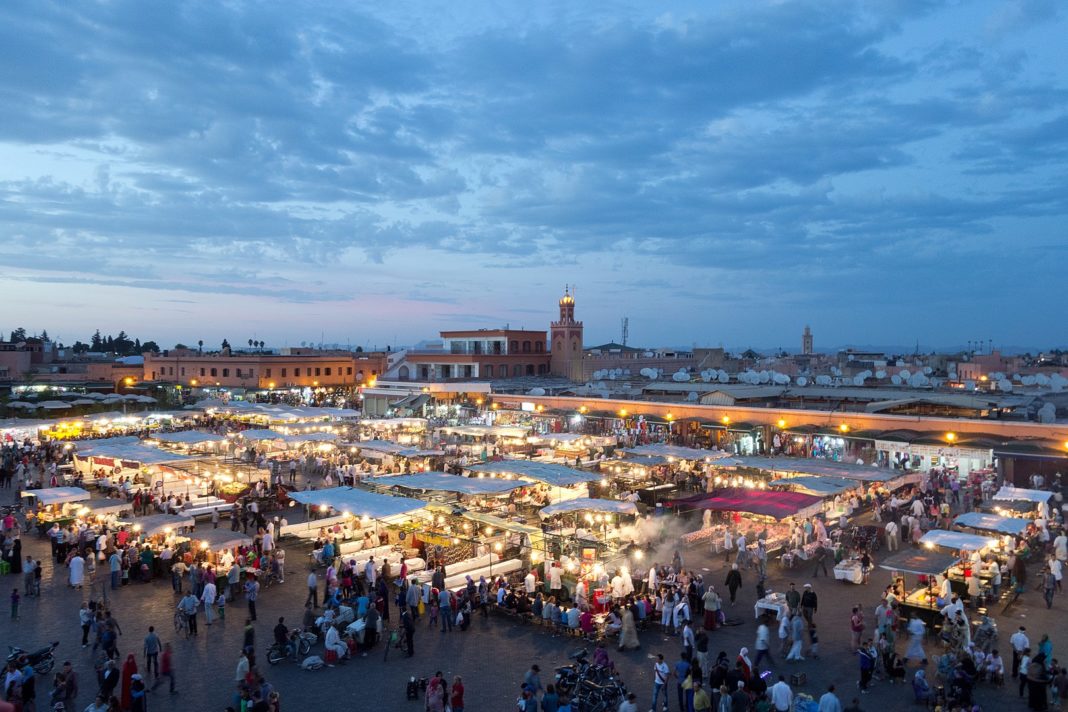Jemaa el-Fnaa is a square and marketplace in Marrakesh’s medina quarter (old city). It remains the main square of Marrakesh, used by locals and tourists.
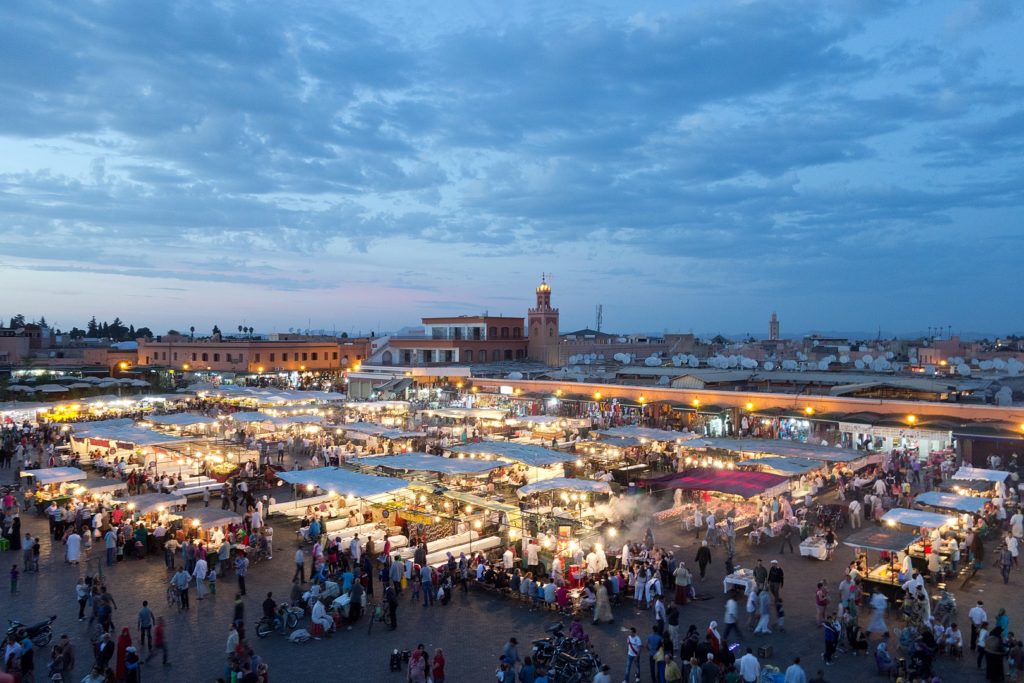
The Jemaa el-Fna Square is one of the main cultural spaces in Marrakesh and has become one of the symbols of the city since its foundation in the eleventh century. It represents a unique concentration of popular Moroccan cultural traditions performed through musical, religious, and artistic expressions.
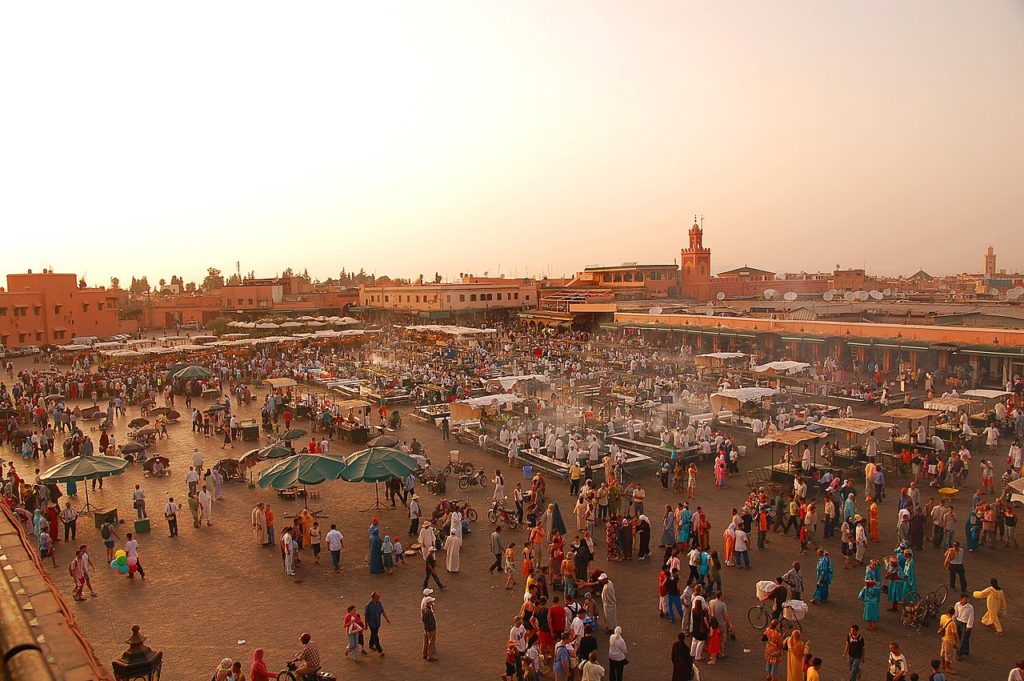
Located at the entrance of the Medina, this triangular square, which is surrounded by restaurants, stands and public buildings, provides everyday commercial activities and various forms of entertainment. It is a meeting point for both the local population and people from elsewhere.
All through the day, and well into the night, a variety of services are offered, such as dental care, traditional medicine, fortune-telling, preaching, and henna tattooing; water-carrying, fruit and traditional food may be bought. In addition, one can enjoy many performances by storytellers, poets, snake-charmers, Berber musicians (mazighen), Gnaoua dancers, and senthir (hajouj) players.
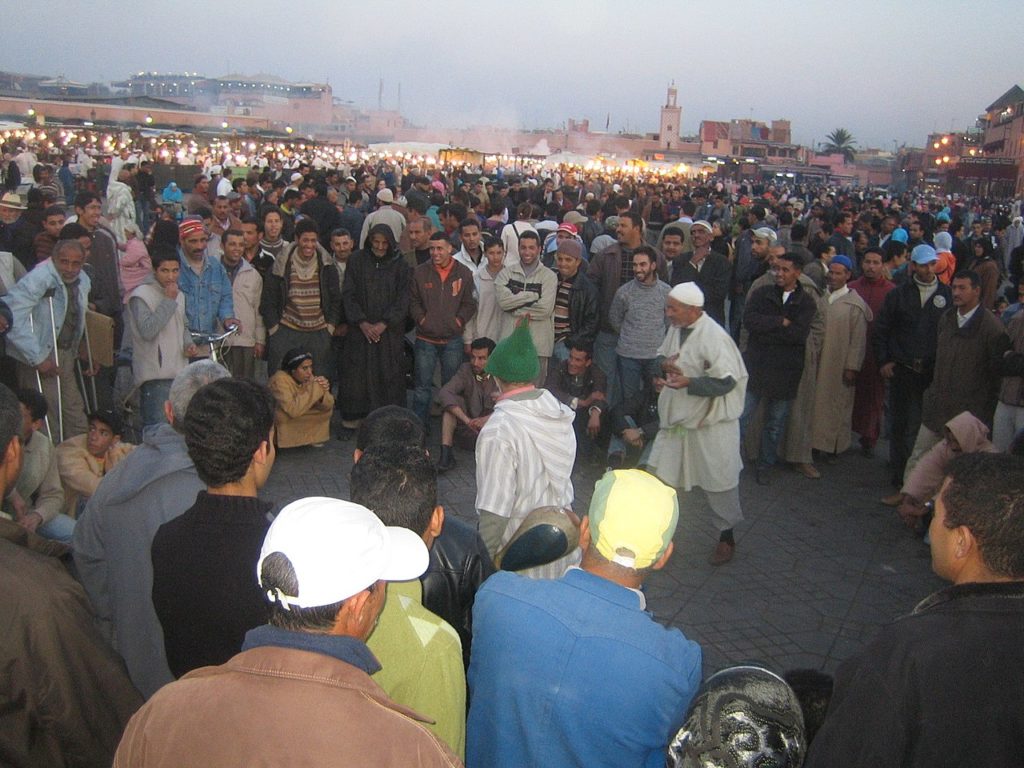
The oral expressions would be continually renewed by bards (imayazen), who used to travel through Berber territories. They continue to combine speech and gesture to teach, entertain and charm the audience. Adapting their art to contemporary contexts, they now improvise on an outline of an ancient text, making their recital accessible to a wider audience.
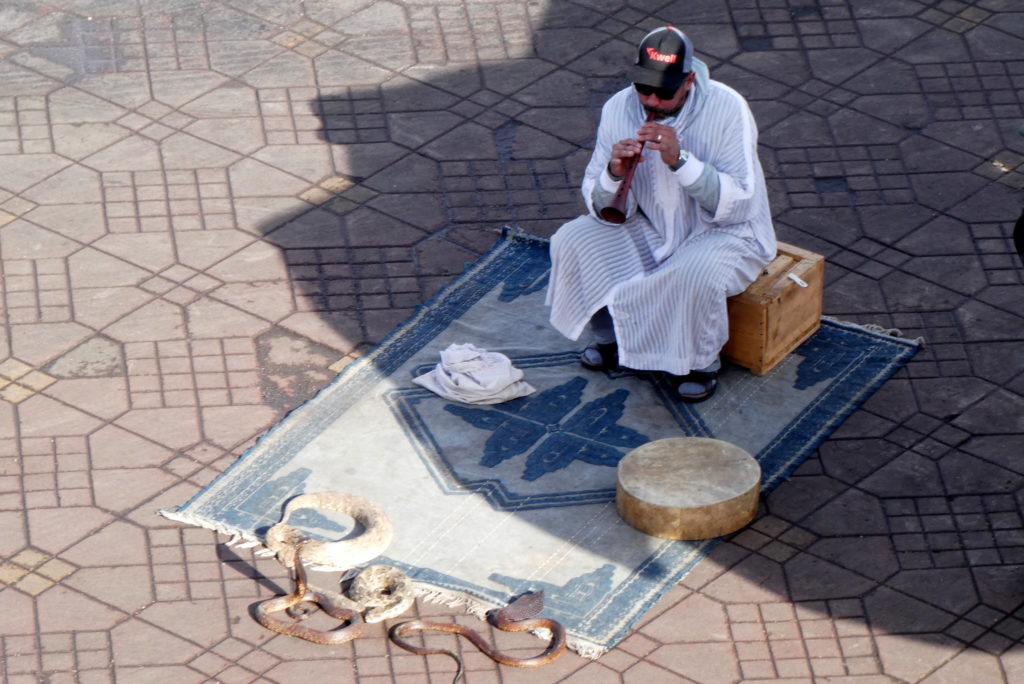
In the evening as the sun goes down Jemaa el Fna transforms into a huge open-air dining area. Makeshift stalls with gas lanterns are set up on the east side of the square and the air fills up with fragrant smells and plumes of cooking smoke.
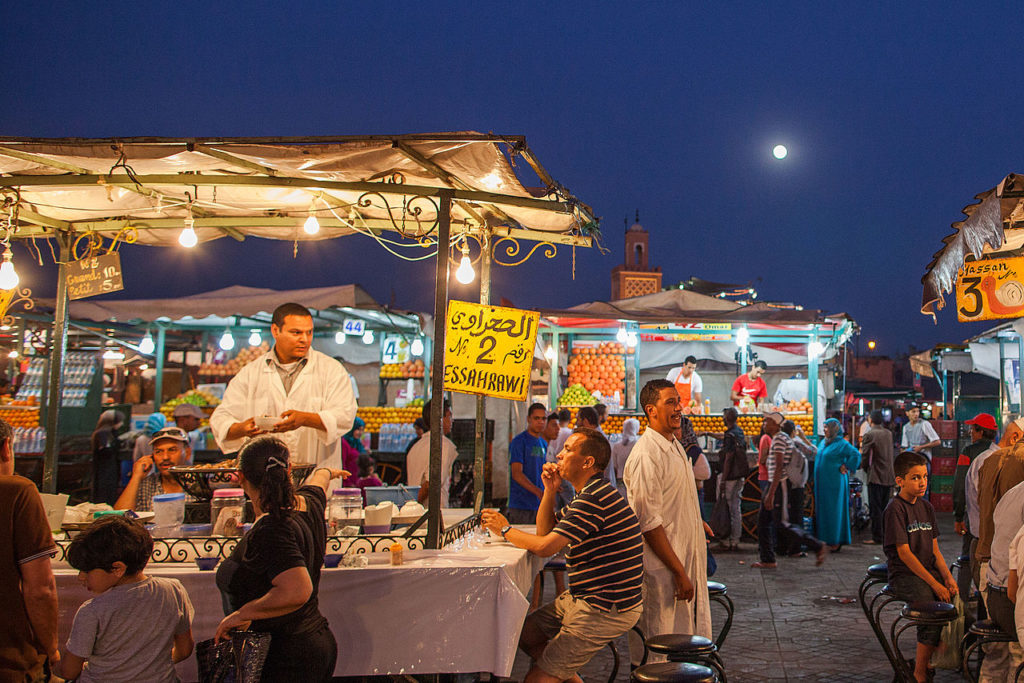
Night or day, the stunning spectacle unfolding at Jemaa el Fna deserves to be photographed for creating unforgettable memories. In order to get the best view of Jemaa el Fna, you’ll have to access the roof terraces framing the edge of the square.
The Jemaa el-Fna Square is a major place of cultural exchange and has enjoyed protection as part of Morocco’s artistic heritage since 1922.
According to the unesco/internet





